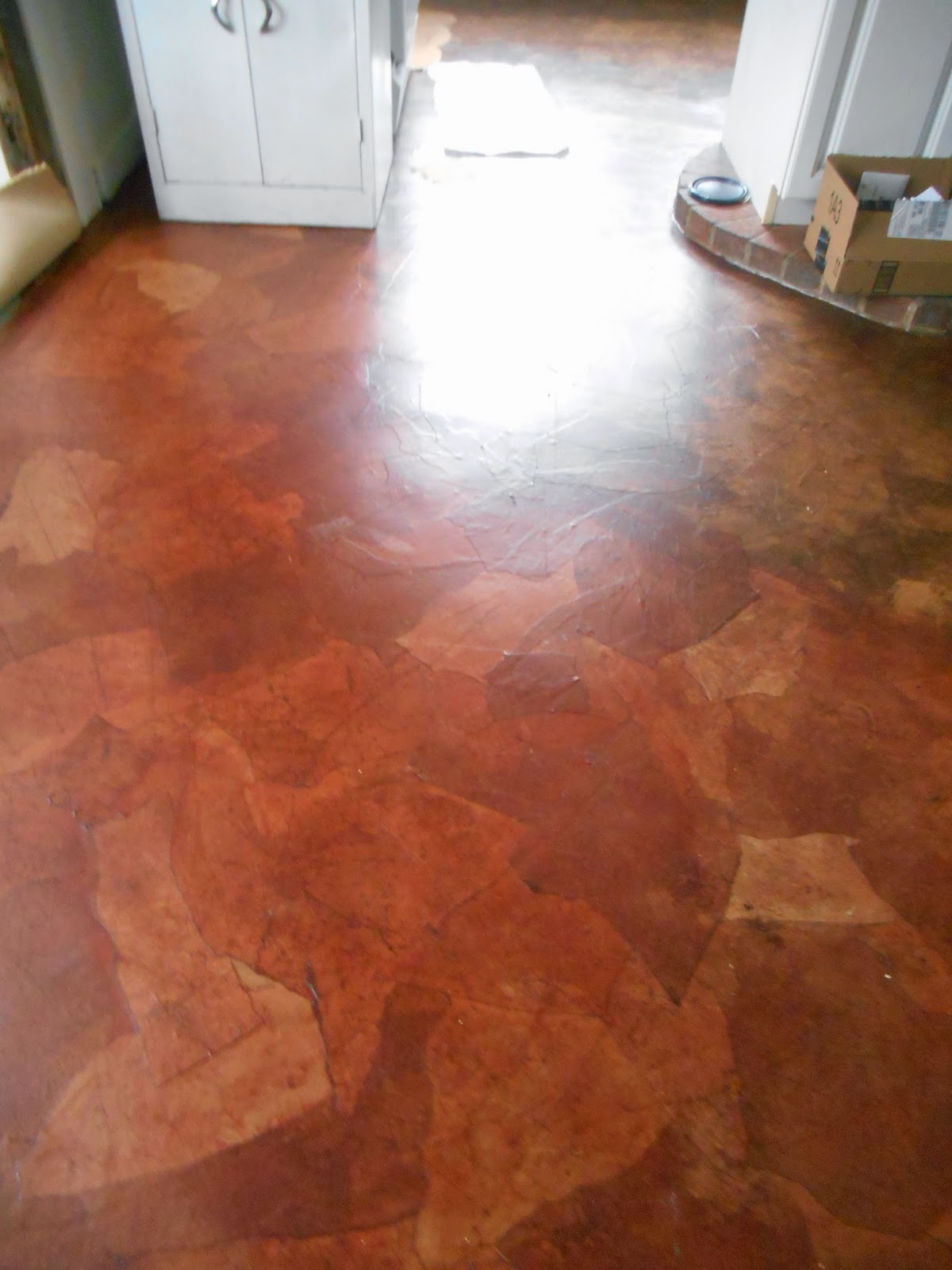A Paper Bag Floor Over Asbestos Linoleum
My new "paper bag" kitchen floor, with a tutorial following.
 |
| Oil-based stain reddish; tempera paint stain brownish. |
 |
| Old rug on left, new linoleum on right. |
My father's 1910 house has old asbestos linoleum tiles
in the downstairs apartment kitchen. During the years he rented out the
apartment to students, he put down rug in half the kitchen to cover those
tiles, and then newer non-asbestos linoleum tiles in the other half (where
the stove and sink were). When I moved in six years ago to rehab the apartment
(since it had been trashed), I pulled up the nasty rug and threw a coir rug over that area and waited for money to have the entire area retiled. I trolled the
craigslist "free" list and scoured the local dump for someone's excess tiles, but nothing showed up.
One day, I came across a blog about paper bag floors. I
began reading every post I could find by those who had done a paper bag floor,
whether over wood, linoleum, or cement. There are plenty of such blogs,
although I
discovered that few people have done such flooring over linoleum, and if they do, they fail
to mention you should NOT degloss or sand old asbestos tiles, because you
release asbestos fibers into the air. If you are working over new linoleum
tiles or flooring, you do want to degloss and sand it lightly.
 | |
| Old linoleum under coir rug, and also under newly removed blue linoleum, showing black mastic |
I did run across a number of posts regarding the old
non-water soluble mastic that is sometimes used to adhere the tiles to the
subflooring, or new linoleum over old. It is notoriously difficult to get up. Acetone
will dissolve the mastic, but it takes a lot of acetone, which is a toxic
chemical. I started to do that, but then stopped, since the mastic was old
enough, it no longer was sticky, and I suspected I could apply glue right over
it.
Otherwise, I followed the directions others had provided.
1. Cleaned the floor and scraped up any bumps left from the
newer linoleum I pried off, so I was working with only the original linoleum
surface, if with some black mastic over it, in areas.
2. Bought a large roll of brown craft paper from Grainger
($23.00 in 2014), a gallon of Elmer's Glue, and a gallon of quality water-based
polyurethane (I used Zar, rather than Minwax, based on recommendation). I also
used some regular heavy grocery bags and discovered the ink on those made by
Trader Joes does not seep through upon using the stain I put down. I ripped up
my paper into large sizes, crumpled them, flatted them out, and brushed a 50/50
mix of water and glue on both sides. I then smoothed the glue impregnated paper
onto the floor, overlapping the pieces,
and using edge pieces for the edges of the room. I let the paper dry, and
discovered that most all the bubbles that formed disappeared as the paper dried
(and shrank).
3. I then used a home-made stain of a mix of a regular
store-bought cabernet color, tinted with some old tube of raw umber and more
turpentine, as the cabernet stain was too red for my tastes, but I wanted to
use it up. I did this on half the floor, only to discover the paper was not
adhering to the floor well in too many areas. I suspect the turpentine was weakening
the glue. So I then mixed up a similar color using tempera paint, which is
water based. I also gave the floor a coat of glue and then it become tacky
before smoothing a piece of paper down. The oil/turpentine stain had a very
different effect on the paper than the tempera wash. I preferred the oil
stain's effect, but, again, I didn't want adhesion problems (where the paper
would just peel up), so I stuck with the water-based tempera wash, which I
brushed on and then blotted with rags. Some people have also dyed their glue
mixture with Rit dye, to good effect. Obviously, I'd prefer the entire floor to look consistently the same, but as this was an experiment for me, not being sure the paper would adhere at all, I'm relatively happy. I may rip up the oil-based stained paper at some point and redo that area so it looks the same as in the sink area, but for the moment, the coir rug has gone back down, and it covers the transition.
4. Finally, I gave the floor a number of coats of
water-based polyurethane.

Comments
Best, Elizabeth